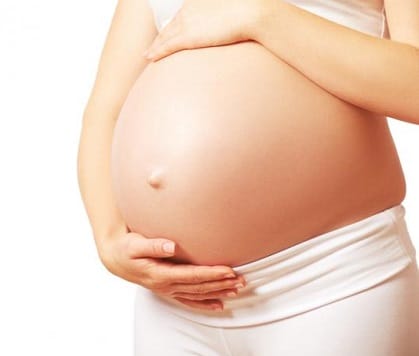Last Updated on February 12, 2024 6:08 pm by INDIAN AWAAZ
By Dr. Anita Kant
Women who first gave birth at an earlier age, ≤ 26 years, have a higher likelihood of frailty in middle-and older age. This association was particularly stronger for women aged between 45 and 65 years than in those aged 65 years or more. These findings were published in the March 2024 issue of the journal Maturitas.1

This study aimed to investigate whether the age at first birth was linked to the prevalence of frailty in middle-aged and older women. The research included women, aged 45 years and above, who participated in the US National Health and Nutrition Examination Survey (NHANES) between 1999 and 2018. Data about age at first birth were collected through a standardized reproductive health questionnaire. Frailty was assessed using a 53-item frailty index. A score >0.21 was diagnosed as frailty. To examine the association between AFB and frailty prevalence, survey-weighted logistic regression models were employed. Additionally, a survey-weighted restricted cubic spline (RCS) model was used to determine the dose-response relationship between AFB and frailty. Mediation analyses were conducted to estimate the effects of parity, family poverty income ratio and education levels on this association.
Out of the 10,828 women included in the study, 3828 (35.4%) were found to have frailty. The analysis using the RCS model revealed a U-shaped relationship between age at first birth and frailty. When compared to the reference group of women with an AFB of 33-35 years, women with age at first birth <18, 18-20, 21-23 and 24-26 years had a higher likelihood of frailty. The respective odds ratios (with 95% confidence intervals) for these groups were 3.02, 2.32, 1.83 and 1.64. However, the differences observed for women with AFB of 27-29, 30-32, or >35 years compared to the reference group were not statistically significant.
The study also found that education status, family poverty income ratio and parity played a significant role in mediating the association between AFB and frailty in women with an AFB of ≤32 years. The mediation proportions for education levels, family poverty income ratio, and parity were 23.4%, 32.4%, and 18.3%, respectively (all p < 0.001).
Based on the results obtained, it can therefore be concluded that there is a correlation between early age at first birth and a higher likelihood of frailty in middle-aged and older women.
Reference
- Hui-Jie Guo, et al. Age at first birth is associated with the likelihood of frailty in middle-aged and older women: A population-based analysis from NHANES 1999-2018. Maturitas. 2024 Mar:181:107904. doi: 10.1016/j.maturitas.2023.107904
- Dr. Anita Kant is Chairman & Head Department of Gynae & Obstetrics, Asian Institute of Medical Sciences,
